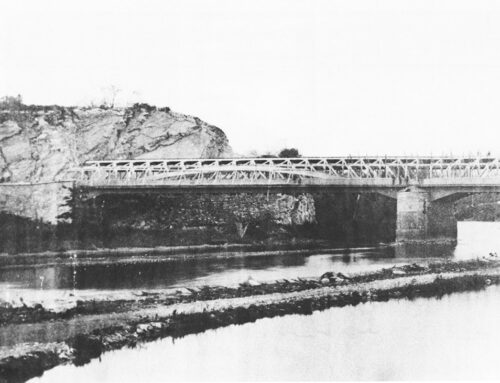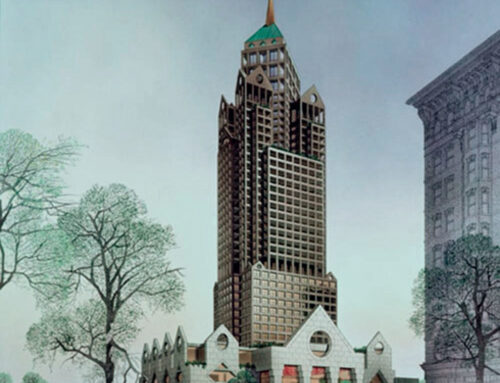The Hawthorn Mansion at the corner of Clymer St. and Mineral Spring Rd. was built by George Frederick Baer as a summer vacation home around the turn of the 20th century.

George Frederick Baer (September 26, 1842 – April 26, 1914) was born in western Pennsylvania. He had a very little academic training, including one year at college.
His greater training came from his experiences as printer’s devil, editor, amateur surveyor, and an active military career beginning as captain of a volunteer company in the Civil War and terminating with his discharge as adjutant general of the Second Brigade, Army of the Potomac.
This was followed by his taking up the study of law and the coincidence of his admission to the bar, the trying and winning of his first case, and his twenty-second birthday. His first important step toward fame and fortune was when he removed to the city of Reading, Pa.
Within two months the newcomer had established his reputation in a case for which he received a fee of $5,000, which in those days was considered something phenomenal for even the leaders of the leaders of the Berks County bar.
In 1901, Baer was installed by financier J. P. Morgan as the President of the Reading Railroad. George F. Baer, lawyer, civic leader and businessman, served as the president of the Philadelphia and Reading Railroad from 1901 until his death in 1914.
George F. Baer’s home at Mineral Spring Road and Clymer Street was a spot of picturesque beauty in every season of the year.
When Reading’s Sesqui-Centennial or 150th anniversary was celebrated in 1898, “Hawthorne” was the scene of lavish entertainment. The railroad president and his wife welcomed and entertained many distinguished visitors. In those days the mansion was the show place of Reading.
Emily Kimmnel Baer, wife of George F. Baer, was one of the social leaders of Reading. The couple frequently hosted receptions and dinners at their home, “Hawthorne” at 1501 Mineral Spring Road.
Emily was involved in local charities, serving on the hoard of the Widow s Home and as president of the Woman’s Club.
The home got its name from two Hawthorne trees which were planted just inside the massive steel gate, one on each side of the stone steps that lead to the pathway to the house. During the month of May there were a mass of crimson blooms that scented the air with a delightful fragrance for a considerable distance. The great flower beds situated at intervals all over the grounds were changed once a month, a new variety of flower supplanting the old.

Scattered throughout the grounds were numerous fruit trees, mainly cherry, but the fruit born was never gathered, being kept for the many varieties of song birds that made their homes in the leafy expanses.
In the northwest part of the estate was a splendid orchard of apple, peach and plum trees, which, during the blossoming season greatly enhanced the beauty of the grounds and later yielded a big crop of fruit.
Greenhouses were located at the rear of the residence. There during the winter months the many rare specimens that were on display in the grounds during the summer were nurtured and preserved.
The Hawthorne home was not only a picturesque spot in the spring and summer, but in the winter as well. The estate occupies considerable ground along both streets. The huge, seven-gabled house stands far is from the street and is almost obscured from view the year round by the thick copse of evergreens that intervene.

Mr. Baer was a reader and student. His library was large and of unusual value. He was interested horticulturist, an authority on roses and chrysanthemums.
He had a fine stock farm near Reading. The park system of that city was laid out under his personal supervision.
In 1947, the Hawthorne home was sold to an out-of-town buyer. The purchase price was not learned, but it was known that the property was offered to Reading Central Catholic High School for $50,000. The school turned down the offer.
All the contents of the home were sold at public auction following the death of Mrs. Mary Hiester, daughter of the late George F. Baer. The property was willed by Mrs. Hiester to her daughter, Emily.
The Hawthorne Home was turned into an assisted living facility by Elmer C. Young in the 1960s and was retained as the largest privately owned parcel of property in the City of Reading until it was sold to a corporation in 1985. It continues to be run as an assisted living facility by the Corporation.





